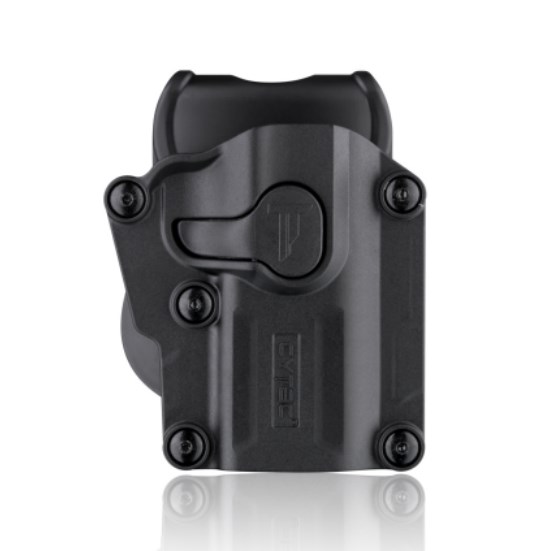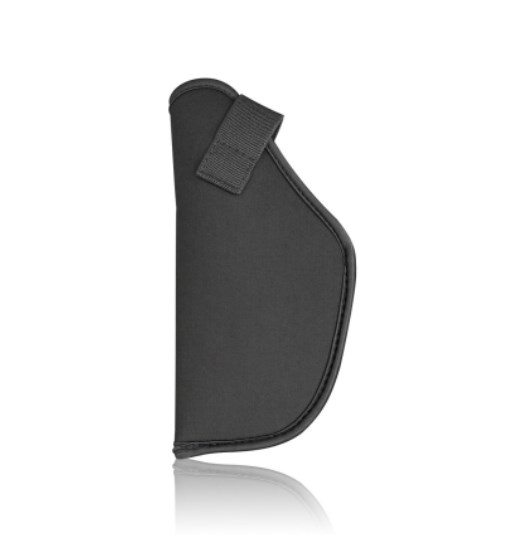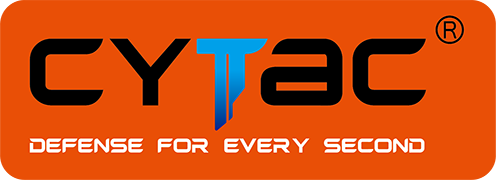Since the invention of pistols, people have felt the need to carry them safely and promptly. So, gun holster was invented. Choosing the right gun holster is not just considering OWB or IWB, but also other aspects, like materials, applicable scenarios, targeted groups, etc. Here, this post concentrates on the different types of gun holster materials. What are holsters made from? That’s a question when you trust your life to your handgun. Let’s review the commonly used gun holster materials on the market to help you narrow down the choices.
Polymer
All injection molded polymer holsters have gone through three procedures: melt the polymer pellets, inject the melted polymer pellets into a well-designed mold with the features and shape of a holster, and demold the holster when the polymer cools down.
Pros of Polymer Holster:
- High strength
- High toughness
- High productivity
- High-temperature resistance
- Customize the thickness and print
- Great flexibility
- Cost-effective
- Comfortable to carry
- Gun-friendly
- Easy to re-holster
- Waterproof
- Better toughness and firmness
Cons of Polymer Holster:
- As time goes by, it may rub away the gun finishing.

Mega-Fit Holster (Item No. CY-UHFS)
Cytac Mega-Fit Holster (Item No. CY-UHFS) is a universal OWB polymer holster highly compatible with 150+ full-size and compact semi-automatic pistols around the world, such as Glock, Ruger, Beretta, Browning, Sig Sauer, etc. It quickly adjusts the holster tension by loosening or tightening the 5 front screws and customizes the carrying cant angle 360 degrees by rotating the tooth gear. Besides, the Mega-Fit Holster offers the classic re-holster way by using the Index finger to release the pistol, giving you easier and more reliable access to your handgun. Worth to mention, it supports 10 kinds of carrying platforms with tooth gear, like paddle, MOLLE, drop leg platform, R-Quickads Clip, MagicPlate, etc.
Most importantly, it adopts military-grade polymer, much tougher and durable than any other materials, and the internal polishing craftsmanship reduces frictions against the gun body.
Please check the Video tutorial below to get familar with the Mega-Fit Holster:
Kydex
Invented in 1965 as a thermoplastic, Kydex was quickly referred to as a reliable holster material and the first Kydex holsters were made around the early 1970s.
Nowadays, Kydex has become a popular material for OWB holsters due to its durability and cost efficiency and Kydex holsters are extensively used by on-duty officers, competition shooters, and combat operatives.
Kydex holsters have many worthwhile advantages, like lightweight, maintenance-free, etc. Except for that, they also have some unbearable drawbacks.
Pros of Kydex Holster:
- Lightweight, easy molding, and durable.
- Not easy to deform even after using for years if properly reserved.
- Thermo-resistant and waterproof.
- Staggering retention mechanisms.
- Consistent draw and grip access.
Cons of Kydex Holster:
- Cause scratches on your gun over time.
- Stiff design, not comfortable to carry.
- Limited carry positions.
- Not universal for all handguns.
Leather/Suede
Leather has come into being since the beginning of human civilization. When the material options were inadequate at that time, leather became the major handgun holster material for its durability and suppleness.
There are different types of leather holsters, including suede, classic leather, and premium leather, which are still floating on the market. They are comfortable, durable, stylish, and quite to draw out the handgun.
Pros of Leather Holster:
- Flexible and comfortable to carry.
- Perfectly fit the body shape.
- Silent draw and re-holstering of pistol.
- Protect the finishing of handgun.
- Beautiful design.
- Durable and soft.
- Great for carrying revolvers.
Cons of Leather Holster:
- The most expensive option among all holster materials.
- Long break-in period.
- Limited retention mechanisms.
- Require careful maintenance.
- Slow speed to draw out the handgun.
- Easy to age, crack, shrink, loose, and corrugate over time.
- Non-waterproof.
- Cause safety issues since it doesn’t fit your firearm well.
Nylon (Fabric/Cloth)
Nylon and neoprene are also one of the holster materials. They are extremely durable, lightweight, and soft on the body and have a relatively lower price than other materials. They often feature Hook & Loop fasteners and shape-retaining stiffeners and used in OWB, IWB, ankle holsters, etc., for concealed carry and EDC by civilians.

Pros of Nylon Holster:
- The cheapest option.
- Universal fit design.
- Whisper-quiet when drawing out the pistol.
- Lightweight and comfortable to carry.
- Customizable.
- Offer extra carrying space.
Cons of Nylon Holster:
- Not structural integrity and flimsy.
- Need two-handed operation to draw out the pistol.
- Slow drawing speed.
- Not very long-lasting.
- Non-waterproof.
Hybrid/Synthetic
Apart from the above holster materials, there are also many other holsters made of hybrid materials combined with kydex and leather or kydex and nylon for more durable and comfortable purposes.
Generally, holsters made of hybrid materials feature a kydex shell and a soft backing so that the firearm is hold tightly and does not rub your body.
Pros of Hybrid Holster:
- Stable, comfortable, and customizable.
- Concealed carry for IWB holsters.
Cons of Hybrid Holster:
- Has dress code requirement.
- High maintenance requirement.
How to Choose the Right Holster?
All in all, when choosing a holster material, you should consider a combination of comfort, durability, security, maintenance, fitting, price, retention, and something else. Then, you should also consider the application. Whether it is suitable for patrolling, self-defending, combat, or shooting training. Now, you know how to select the best material for your handguns. If you are not determined yet, I will highly recommend you try the universal polymer Mega-Fit Holster!
